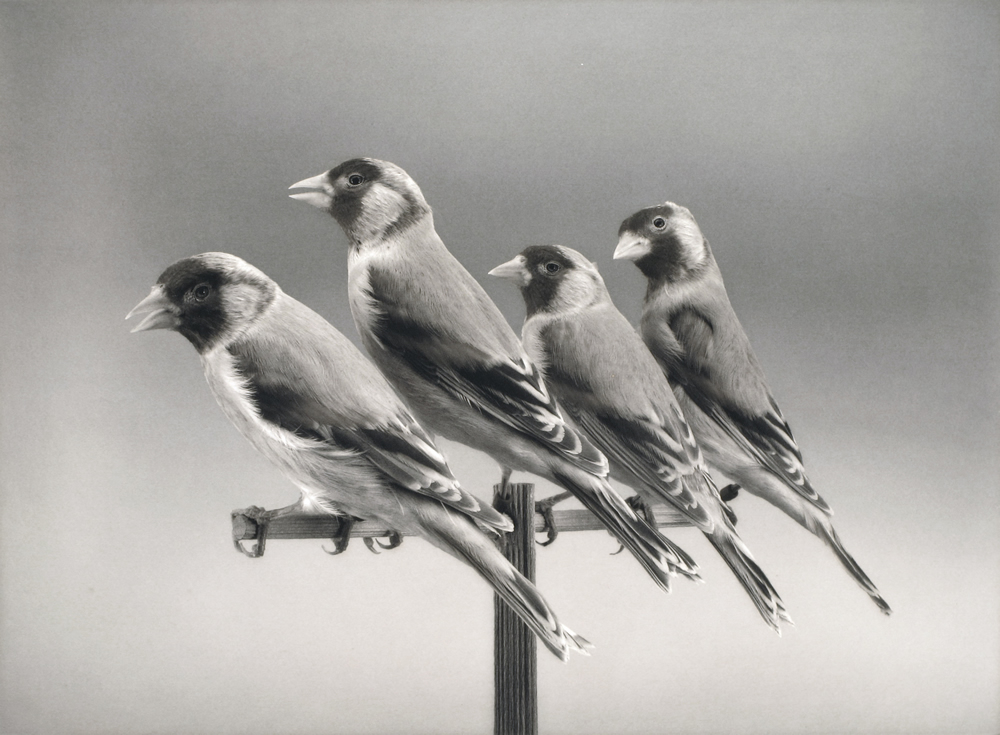Jan Groover
“Good to look at, good to think about.”
John Szarkowski, director of photography at the Museum of Modern Art, New York, from 1962 to 1991, in Jan Groover: Photographs, New York 1993.
Jan Groover’s photographic works are relevant and groundbreaking artworks that helped facilitate the acceptance of photography as an art form.
Jan Groover, 1943-2012, born in Plainfield, New Jersey, turned away from abstract painting in the early 1970s and began experimenting with the medium of photography. – Groover eliminated the documentary elements from her works, still lifes and people, and challenged the limits of the medium, investigating the relationship between the elements of her works, creating, in a sense, abstraction.


© Jan Groover, Untitled (0647), 1980, platinum-palladium contact print, 20,3 x 25,5 cm, edition of 15
© Jan Groover, Untitled (KSL 63.1), 1978, chromogenic print, 50,8 x 61 cm, edition of 3
copyright Jan Groover, courtesy Janet Bordon, Inc., New York
Viktoria Sorochinski
„The combination of documentary and fiction draws out the inner state of mind of each character, revealing the psychological tensions between the protagonists.”
In Ihrer Arbeit setzt sich Sorochinski mit familiären Dynamiken auseinander und redefiniert in diesem Prozess konstant Ihre eigene Identität. Der multidisziplinäre Hintergrund der Künstlerin – einschließlich Malerei, Skulptur, Installation – ist in ihrer Photographie- und Videoarbeit offensichtlich. Viktoria Sorochinski was born 1979 in Mariupol/Ukraine. She has lived in Magadan/Russia, Jerusalem, Montreal and New York, and currently lives in Berlin.
I the video Daddy’s Confession, 2012, part of the photographic/video project Daddy, 2008-2015, Viktoria Sorochinski portrays a father’s internal monologue; his unfulfilled wish to have a son turns into an unexpected reality in which he has to bring up a daughter.



Viktoria Sorochinski, stills from Daddy’s Confession, 2012, 4’58” HD
“I always wanted a son, not a daughter, really, but you know…
I guess I was very lonely, I was a lonely child, …
But one day I thought: “I’m going to give birth, to a son who is going to guide me out of this cesspool…
He is going to be the strong one, and he is going to carry me out!…
And then, one day… She just uuh…she attempted to escape, like a wolf! And I was just amazed at the strength, the courage! It seemed like she just defied death….“
Keiji Uematsu
“To create a work in which the lack of a single element will cause the entire structure – the invisible existences of things and their relationships – to collapse like a cosmos.”
Keiji Uematsu, born in 1947 in Kobe, Japan, works with drawing, sculpture and photography.


© Keiji Uematsu, “Wave Motion I” (1) and (2), 1976, 2 Silbergelatineprints, jeder 40.6 x 51.3 cm, Edition of 4, Courtesy Gallery Löhrl, Mönchengladbach
Carsten Höller
“In his most recent project, the series ‘Four Birds’, Carsten Höller presents depictions of finches that have been born infertile as a result of their breeding. Rendered in monochrome, these representations draw attention to each specific corpus and each individual feather. The stylised studio setting suggests selective breeding and transcience, but simultaneously highlights the uniqueness and beauty of these animals.”
Carsten Höller, born in 1961 in Brussels, works as an installation artist. His experiences in the biological sciences are a recurrent influence on his artistic concepts.


© Carsten Höller & Niels Boch Jensen Editions, Four Birds, 2015, Series of 9, Photogravure, Somerset 300 gr., Size /cm: Image 36,5 x 49,5; Paper 54,5 x 67; Frame 55 x 72, Edition of 18 + 4 AP
Photogravure is a halftone copper print based on a photographic template. The photogravures Four Birds are published by Niels Borch Jensen Editions, Copenhagen.